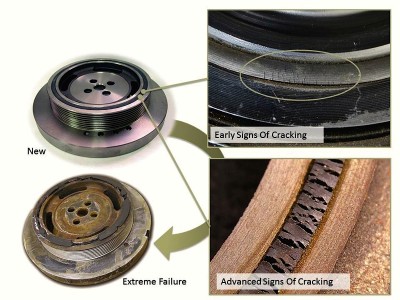North Baltic sea
Guru
you should check the vibration damper when replacing tightening the belts. if and when it breaks down sometimes makes a big engine of destruction
How It Works: Viscous Dampers, A.K.A. Harmonic Balancers - Diesel Army


How It Works: Viscous Dampers, A.K.A. Harmonic Balancers - Diesel Army











